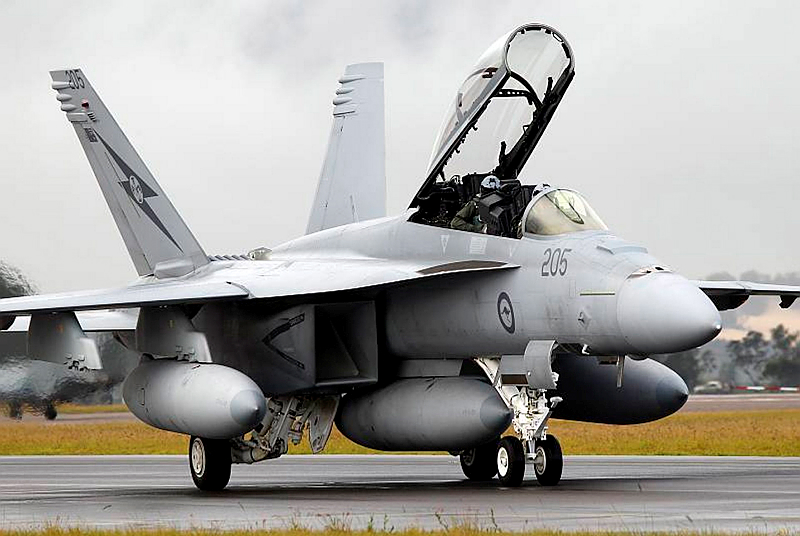ASPI suggests: special edition
Posted By
The Editors
on July 9, 2013 @ 14:00

The latest issue of the Kokoda Foundation's
Security Challenges journal is a special edition that collects contributions on
'The Defence White Paper 2013'. ASPI is well represented, and the abstracts of our papers are reprinted below.
Peter Jennings:
The Politics of Defence White Papers
This article analyses the political context of Defence White Papers from 1976 to 2013. Political competition between the major Australian political parties is an inevitable and indeed essential backdrop to policy development. Only by understanding the dynamics of that competition is it possible to understand how governments make key defence policy decisions around strategy, force structure and defence spending. Competition for authority within parties also informs how Prime Ministers use White Papers as a means to cement their own power. A key challenge for governments is the need to look credible as custodians of Australian national security in the perceptions of voters. If one party is unable to demonstrate clear superiority over the other in its management of defence, a secondary aim is to try to remove defence as a point of political difference by claiming bipartisanship on key aspects of policy.
Benjamin Schreer:
Business as Usual? The 2013 Defence White Paper and the US Alliance
The 2013 White Paper reaffirms the centrality of the US Alliance for Australia. It identifies a number of concrete areas for future cooperation and provides the foundation for developing greater strategic ties with China while remaining firmly anchored in the US camp. It is less clear, however, when it comes to Australia’s future contribution to burden-sharing within the Alliance. Putting actions behind the goal to play a greater role in Southeast Asia will be an important litmus test for the alliance relationship. In many ways, the White Paper reflects a phase of re-orientation in the Alliance: away from operations further afield towards the increasing security dynamics in Australia’s own region. As the future of China’s trajectory—and US-Sino strategic relations—is still very much uncertain, the ‘hedging’ approach taken White Paper’s approach makes sense. What happens if US-Sino strategic relations become more competitive is left to another day.
Mark Thomson:
Defence Funding in 2013: Means, Ends and Make Believe
The 2009 Defence White Paper set out an ambitious vision for the modernisation and expansion of the Australian Defence Force. But no sooner had it been released, than funding began to be cut in a headlong rush to bring the Commonwealth budget into surplus. Between 2009 and 2012, around $20 billion of promised funding was lost. The 2013 White Paper largely reconfirmed the goals of 2009 and restarted growth in defence funding. But the growth is occurring from a lower base, and the difference between the funding promised in 2009 and that announced in 2013 amounts to a deficit of around $33 billion for the period 2009 to 2022. It follows that, with less money than its predecessor, the 2013 White Paper is underfunded. And while opportunities exist to make Defence more efficient, the scale of possible saving will not be sufficient to balance the books. At some point, either more money will need to be found or capability ambitions reduced. With troops returning to barracks following more than a decade of high operational tempo, the natural tendency will be to cut the size of the Army to free up resources for investment in high-end and maritime capabilities. Recent experience in East Timor and Solomon Islands should temper that impulse.
Andrew Davies:
The Future Submarine Project
This year's Defence White Paper reaffirmed most of the aspirations outlined for Australia's future submarine in the 2009 White Paper, with the notable exception of land attack cruise missiles. In doing so, it focussed on the two most capable options of the four that were hitherto under consideration—an evolved Collins class boat, or a new bespoke design. While media reporting said the government had ruled out the off-the shelf and modified off-the-shelf options, it has actually suspended work on those, thus allowing the possibility that they could be revived at some future time. Regardless of which of the two remaining options is chosen, maintaining continuity of submarine availability until the first of class is ready for service will require an extension of the planned life of the Collins fleet. The net result is that the evolved Collins is the option most likely to be pursued.
The other papers in the volume are:
Brendan Taylor:
The Defence White Paper 2013 and Australia’s Strategic Environment
Michael L'Estrange:
International Defence Engagement: Potential and Limitations
Stephan Frühling:
The 2013 Defence White Paper: Strategic Guidance without Strategy
Peter Leahy:
The Future for Land Forces
John Blackburn:
The Future for Aerospace Forces
James Goldrick:
The Future for Maritime Forces
Desmond Ball and Gary Waters:
Cyber Defence and Warfare
Nick Jans:
The ‘People’ Perspective
Robert Wylie:
Defence Industry and Innovation Policy
Ross Babbage:
Reform in Defence? Governance, Decision-Making and Policy Formulation
Image courtesy of Department of Defence.
Article printed from The Strategist: https://www.aspistrategist.org.au
URL to article: https://www.aspistrategist.org.au/aspi-suggests-special-edition/
[1] Image: http://www.aspistrategist.org.au/wp-content/uploads/2013/07/20130628raaf8185068_0195.jpg
[2] 'The Defence White Paper 2013': https://www.aspistrategist.org.aufile:///J:/The%20Strategist/articles/Finals/The%20Politics%20of%20Defence%20White%20Papers
[3] The Politics of Defence White Papers: http://www.securitychallenges.org.au/ArticlePages/vol9no2Jennings.html
[4] Business as Usual? The 2013 Defence White Paper and the US Alliance: http://www.securitychallenges.org.au/ArticlePages/vol9no2Schreer.html
[5] Defence Funding in 2013: Means, Ends and Make Believe: http://www.securitychallenges.org.au/ArticlePages/vol9no2Thomson.html
[6] The Future Submarine Project: http://www.securitychallenges.org.au/ArticlePages/vol9no2Davies.html
[7] The Defence White Paper 2013 and Australia’s Strategic Environment: http://www.securitychallenges.org.au/ArticlePages/vol9no2Taylor.html
[8] International Defence Engagement: Potential and Limitations: http://www.securitychallenges.org.au/ArticlePages/vol9no2L%27Estrange.html
[9] The 2013 Defence White Paper: Strategic Guidance without Strategy: http://www.securitychallenges.org.au/ArticlePages/vol9no2Fruehling.html
[10] The Future for Land Forces : http://www.securitychallenges.org.au/ArticlePages/vol9no2Leahy.html
[11] The Future for Aerospace Forces : http://www.securitychallenges.org.au/ArticlePages/vol9no2Blackburn.html
[12] The Future for Maritime Forces : http://www.securitychallenges.org.au/ArticlePages/vol9no2Goldrick.html
[13] Cyber Defence and Warfare : http://www.securitychallenges.org.au/ArticlePages/vol9no2BallandWaters.html
[14] The ‘People’ Perspective : http://www.securitychallenges.org.au/ArticlePages/vol9no2Jans.html
[15] Defence Industry and Innovation Policy : http://www.securitychallenges.org.au/ArticlePages/vol9no2Wylie.html
[16] Reform in Defence? Governance, Decision-Making and Policy Formulation : http://www.securitychallenges.org.au/ArticlePages/vol9no2Babbage.html
[17] Department of Defence: http://images.defence.gov.au/20130628raaf8185068_0195.jpg
 Print This Post
Print This Post